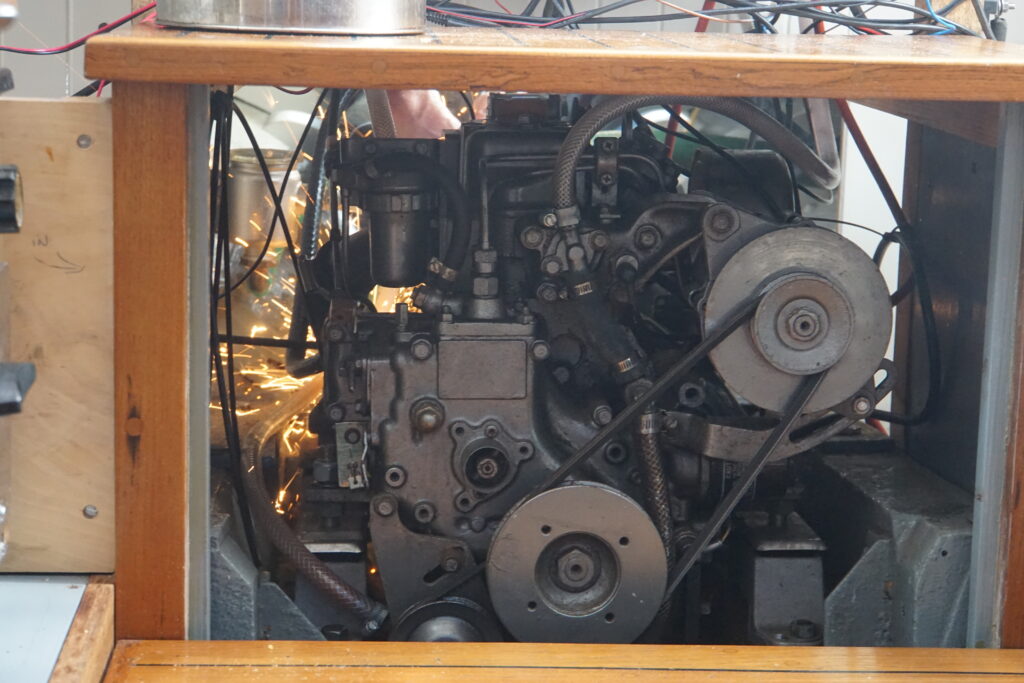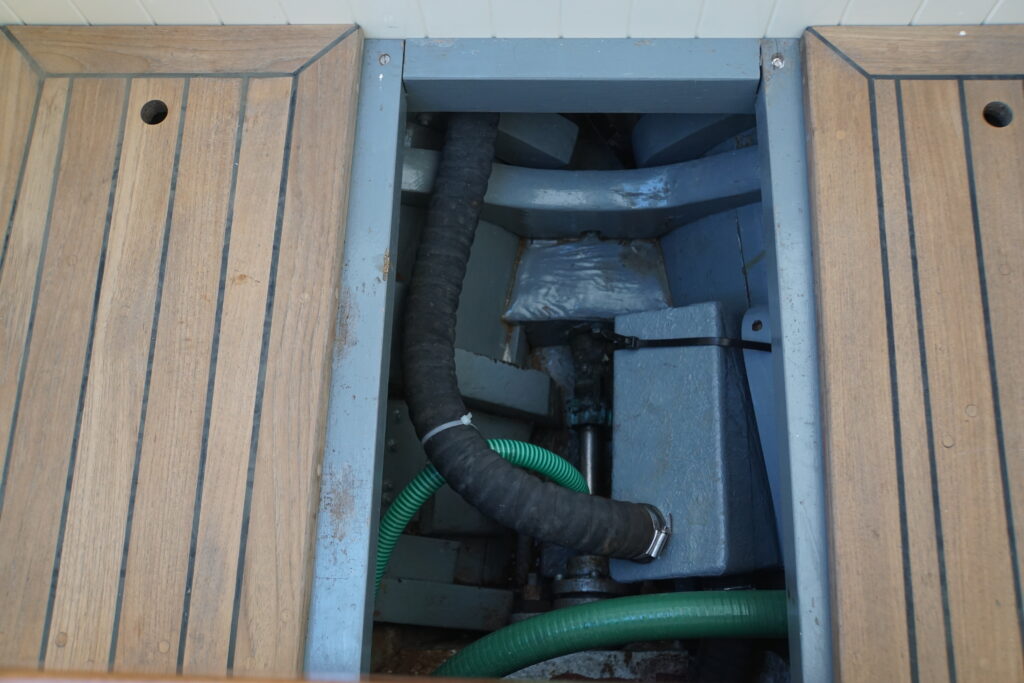 Restoration
Restoration
Auxiliary power
‘Cachalot’ was originally built as a yacht and didn’t have any auxiliary power until the 1930s. The engine, undamaged by the sinking, was restored and refitted.
The Certificate of British Registry refers to an auxiliary petrol internal combustion engine being fitted in 1934, described as ‘Stuart Turner, 2 cylinder, 6hp’. We assume this to be her first auxiliary engine, in use when she took part in Operation Dynamo, 1940. The 1963 Lloyds Register of Yachts lists a different engine: ‘2 cylinder, 8.5hp, Lister Blackstone 61’. This must have been installed either before or after her return to England from the Mediterranean. In 1990, the same year she took part in the ‘Return to Dunkirk’, ’Cachalot’ had a Yanmar 16hp diesel engine installed. This was the same engine she had when Steve and Glyn purchased her in 2005. It seemed to have survived the sinking, and the decision was made to recondition it rather than attempt to find an alternative that would fit.

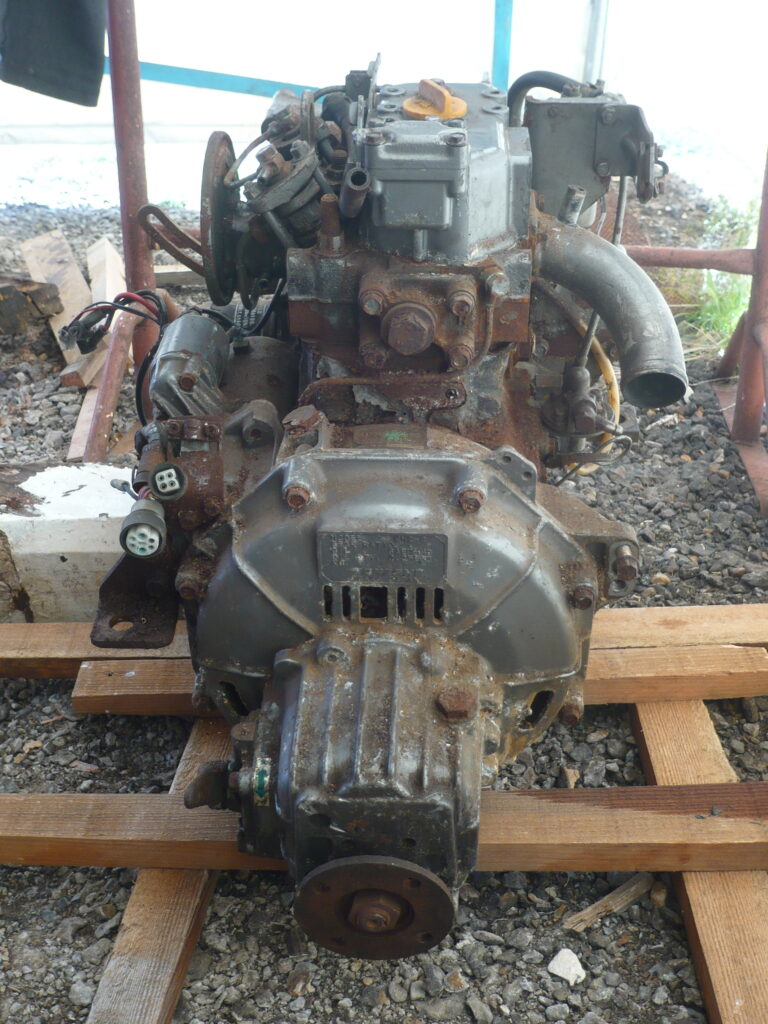

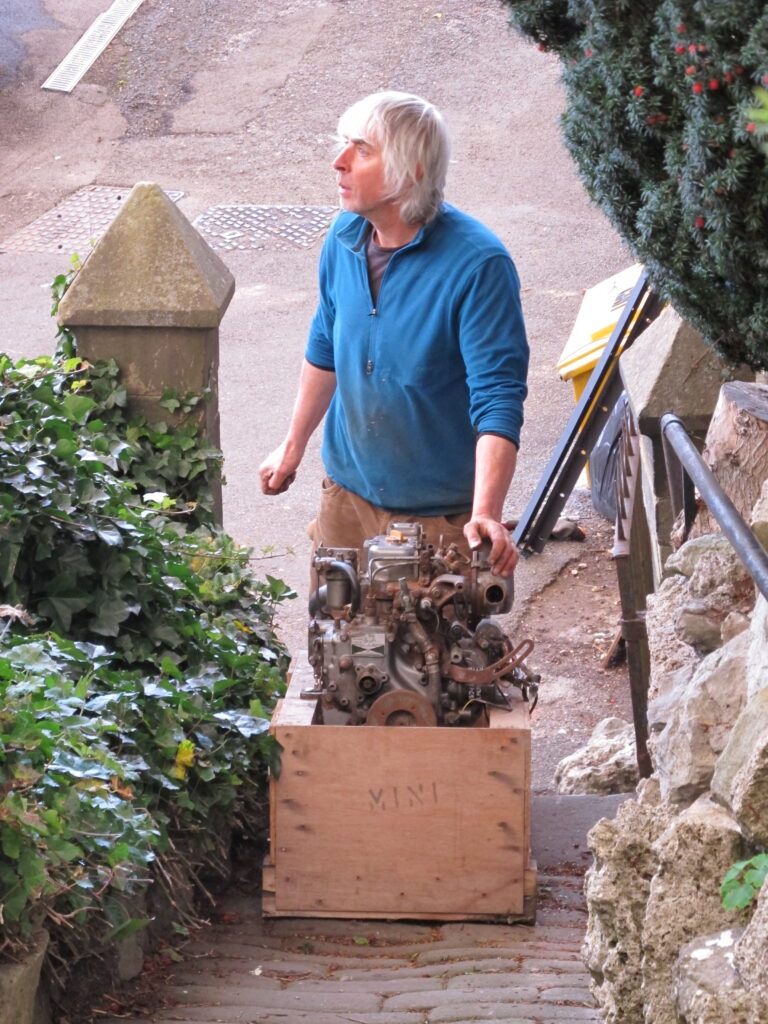

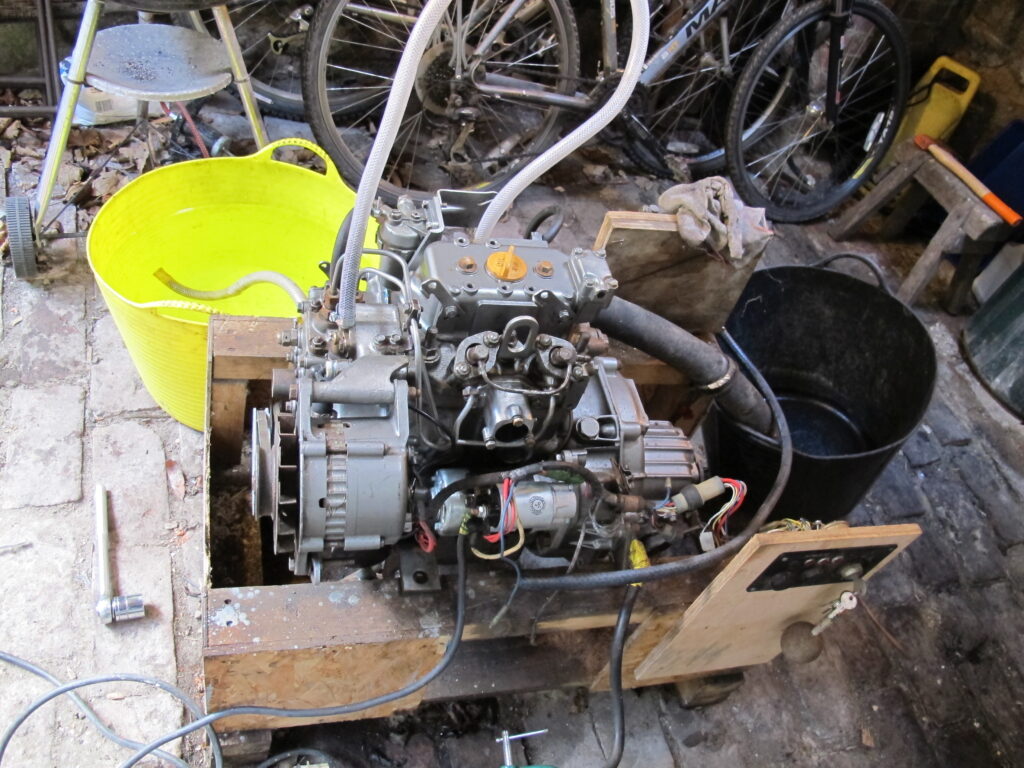

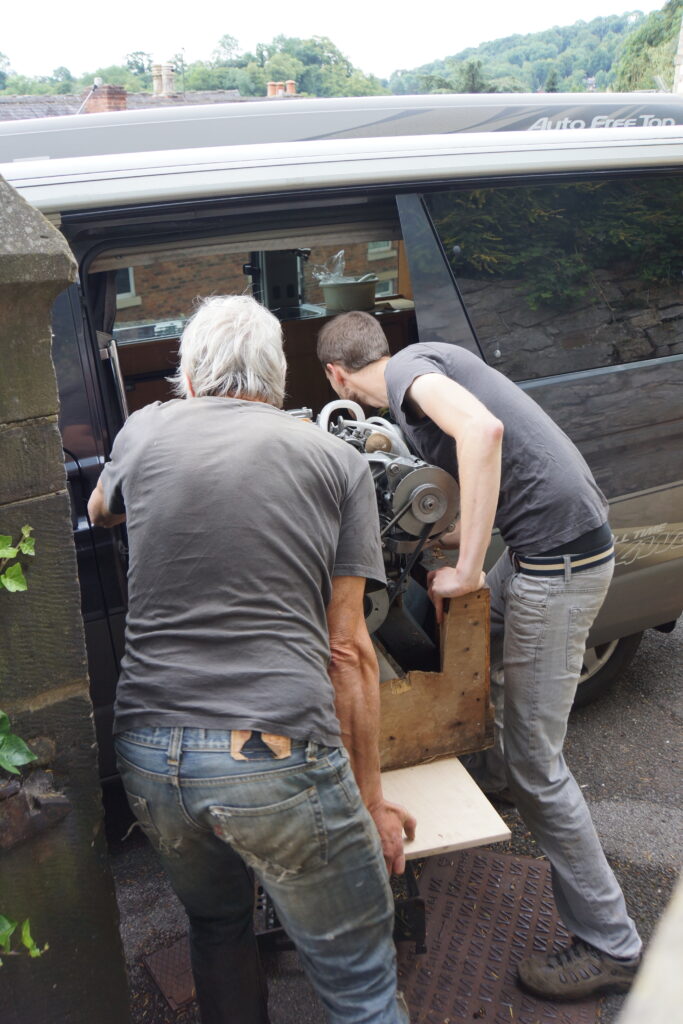
In 2009, the OGA August Classics fleet were in the Tidemill. ‘Anything I can do to help?’ asked Trevor from ‘Gromit’ . . . ‘Well, I could do with getting that engine out!’ Steve replied. No sooner said than off Trevor went to get blocks from ‘Gromit’ to set up a pulley system and, after quite a bit of hauling and heaving, the engine was resting at the side of the tent. The following year Steve saw the engine as a ‘winter project’ back in Matlock Bath and with help from Pete and Paul, he managed to load it into the Bongo and drive it back to Derbyshire. The challenge was how to get it up to the house, and then, of course, where to put it, since it was much too heavy to take up to the top workshop. As usual, next-door neighbour Dave was keen to lend a hand, and after a lot of chin-scratching, tugging, heaving and heavy hauling the engine was carefully extracted from the Bongo onto a makeshift trolley and brought up the steps into the back yard. Next plan . . . build a ‘lean-to’ in the back yard to double up as a garden store and covered workshop!
There were regular consultations with Jim, research on the internet, conversations with Yanmar dealers and French Marine in Ipswich. Work progressed well, with spare parts ordered and arriving promptly, the engine started to look really shiny again. With the finishing touches to the engine restoration completed in January 2012 . . . it runs like a dream, with thanks to Jim for encouragement and expert advice. Simon helped with moving the engine back down to the waiting Bongo for the return trip to Woodbridge in July 2014, and we enlisted the help of Tidemill staff and their new JCB, to lift it back into the hull, another major turning point in the project!
August 2018 found us out in the river to test the new sails, but as the engine fired up there was a lot of worrying noise! Following close inspection, it looked like the exhaust pipe was restricting the drive lever. There’s not much space so Steve decided to cut a notch in the metal frame the engine rests on. Like much of the boat, it’s over-engineered, so, with lots of sparks and noise he cuts it away making space for the pipes and good clearance for the drive lever. Experiments driving forward and back in the berth put our minds at rest it’s neither the engine itself, nor gearbox that is the problem.
Another problem with the engine, once it had been used a few times, was a leaky exhaust box. Following extensive research into how to replace the custom-made old exhaust box for the engine, and having failed to find any suitable replacement, or means of repairing it, Steve made a new one and testing resulted in a positive result so far (ie no leaks into the super-dry bilges).
